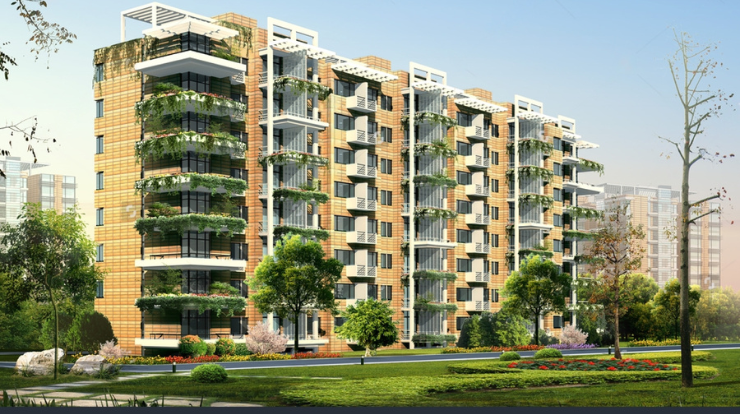Custom architectural scale models in Dubai’s hotel sector are more than visual aids. They are intricate tools used to reflect brand identity, functionality, and financial promise. Behind the beauty of each model lies careful selection of materials.
Each material is chosen not only for appearance but also for how well it communicates the design’s purpose. In Dubai, a city where luxury meets innovation, clients have high expectations. This makes the choice of materials a critical part of the model-making process.
Below is a detailed look at the most requested materials used in creating custom architectural scale models Dubai for hotel developments.
Acrylic for Clarity and Precision
Acrylic is one of the most popular materials used in scale models across Dubai. It is transparent, lightweight, and easy to manipulate. Model makers use clear acrylic to represent glass walls, windows, and pools. It gives a polished and sleek look, often mimicking real-world luxury finishes.
Acrylic is ideal for modern hotels that feature open designs, full-glass facades, or rooftop infinity pools. In Dubai, many hotel investors prefer acrylic elements because they offer visual accuracy and elegance. This clarity helps stakeholders understand light flow, views, and transparency in the actual structure.
Foam Board for Core Structures
Foam board is a basic yet essential material used in most hotel architectural models. It is lightweight, affordable, and easy to cut into various shapes. Foam board forms the skeleton or core structure of the model. It is particularly useful during early design stages.
In Dubai, developers use foam board to quickly test massing, layouts, and site planning. Though it may be hidden later by finishes, foam board supports the integrity of the model. It allows for faster adjustments when presenting multiple hotel concepts.
MDF and Basswood for Base Construction
Medium-density fiberboard (MDF) and basswood are widely used for base construction and load-bearing parts of the model. MDF is dense and durable, making it perfect for the main platform. Basswood, on the other hand, offers flexibility for crafting finer architectural elements like balconies, colonnades, and railings.
Hotel projects in Dubai often include complex detailing. Basswood allows for accurate curves, arches, and fine textures. It also paints and stains well, which is important when matching brand colors or material palettes.
Styrene Sheets for Fine Surface Details
Styrene plastic sheets are another material frequently used in Dubai’s scale models. They are smooth and come in different thicknesses. Styrene is useful for representing tiled surfaces, metal panels, or stone facades.
Many Dubai hotels include decorative cladding and advanced facade systems. Styrene helps to replicate these features without weighing down the model. It can also be laser-cut or etched, making it perfect for detailed hotel entrances or rooftop design elements.
LED Lighting for Functional Illumination
Lighting is a defining feature in most custom hotel models. LED lights are used to simulate real illumination inside the hotel. From guest rooms to lobbies and restaurants, these lights guide the viewer’s eye and create visual interest.
Dubai developers often request multiple lighting modes in a model. This includes daytime, nighttime, and event lighting scenarios. LED lighting shows how the hotel feels at different times and is a powerful tool during presentations. It also helps communicate the mood, ambiance, and brand positioning of the hotel.
Resin for Custom Fixtures and Furniture
Resin is requested when custom furniture, fixtures, or decorative pieces are needed. In high-end Dubai hotel models, lobby furniture, pools, and signature art pieces are crafted from colored resin. This material can be molded into unique shapes and holds color well.
It allows the model to showcase more than just structure. It reflects the hotel’s personality. A luxury hotel model with resin-crafted chandeliers or spa bathtubs instantly sets a tone of elegance. This helps clients and investors understand the lifestyle experience being offered.
3D Printed Parts for Complex Geometry
Dubai is a leader in architectural innovation. Many hotel models now include 3D printed components. These parts can replicate complex forms like curved balconies, intricate facades, or futuristic design elements.
3D printing allows for high precision and customization. It’s perfect for limited edition hotels or concept-based resorts that require one-of-a-kind architecture. With 3D printing, scale models can include branded design features and spatial innovations. This reflects Dubai’s forward-thinking hotel sector.
Textured Paper and Vinyl for Surface Finishes
To replicate materials like marble, wood, or concrete, model makers in Dubai use textured papers and self-adhesive vinyl. These are applied to walls, floors, and roofs. They give a realistic finish and help viewers quickly identify different materials used in the actual construction.
Luxury hotels often use a mix of materials for identity. Vinyl textures let designers represent this mix on a small scale. From brushed steel facades to hardwood flooring, these finishes give a tactile, visual richness to the model.
Glass Beads and Sand for Landscaping
Landscaping is a major selling point for hotel developments. Many scale models in Dubai use natural elements like glass beads, colored sand, and faux greenery to simulate gardens, beaches, or desert surroundings.
Hotels in Dubai often feature waterfronts, fountains, and open-air courtyards. These materials bring those elements to life. A beachfront hotel model with blue glass beads or palm trees becomes more immersive. This helps investors see the lifestyle appeal of the location.
Conclusion
The materials used in custom architectural scale models Dubai for hotel developments go far beyond structure. They serve as tools to tell a visual story. Each material, from clear acrylic to basswood, plays a role in shaping perception, showcasing design value, and conveying luxury.
Dubai’s hotel market demands accuracy, innovation, and elegance. By using the right mix of materials, model makers help developers win over investors, planning authorities, and future guests. In a fast-paced market like Dubai, where visuals matter more than ever, choosing the right materials for a scale model is a step toward real-world success.
